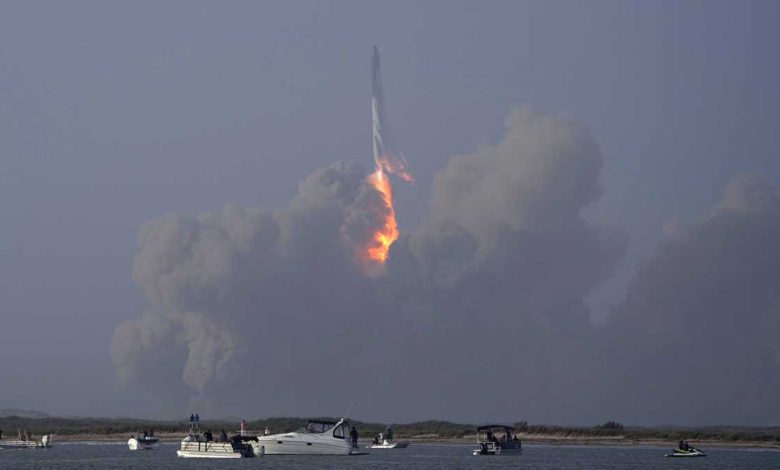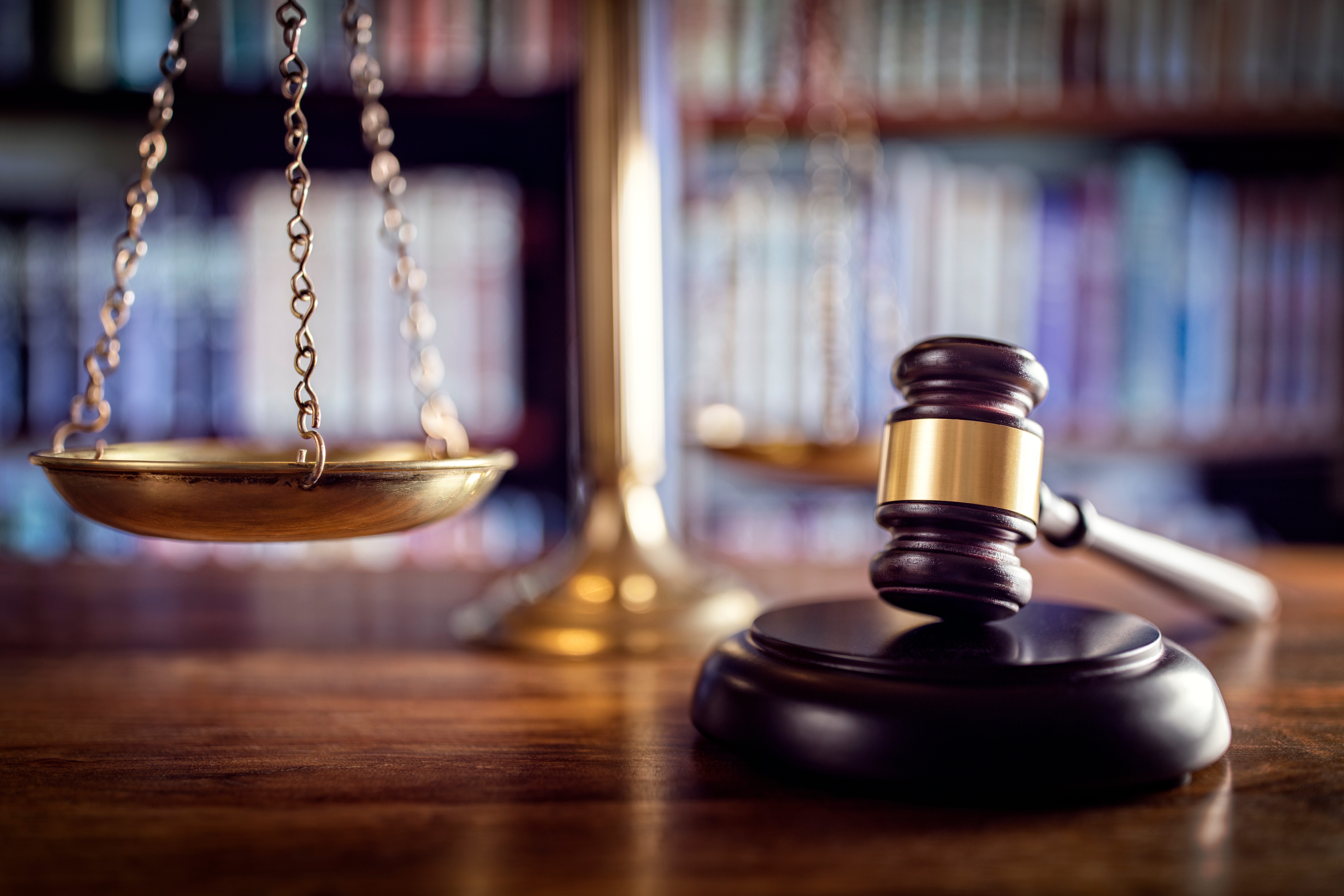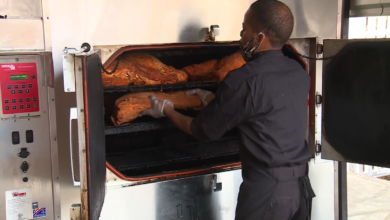
SpaceX Starship rocket fails minutes after launching from Texas
215 seconds. Ok. So eight so. Right. Yeah, zero. Post launch operations to stir up your chamber pressure three seconds into the test flight of the inaugural vehicle tower picks over the Paulson reports first stages. No, what *** when the green at twice the thrust of the Saturn additional signal that we throttle down and throttled back up. Going through the period of maximum aerodynamic pressure velocity increases the dense of the atmosphere is decreasing, lessening stress on the vehicle to call out next. Now continuing to watch the first stage as we head down range 100 seconds into flight. Our next major activity is going to be shut down of the first stage, Houston tracking station. Now acquiring the vehicle, we will get separation of super heavy and ignition of the starship engines. When starship separates, we light up six engines in *** staggered sequence and if all goes well, those six engines will burn for almost 6.5 minutes on board. View from and views of the raft engines on the second stage as we prepare for state separation after state separation, the first stage will flip and begin *** boost back maneuver for landing in the Gulf continuing to fly two minutes, 40 seconds. Let's get ready for main engine cut off. Yeah, beginning the flip for stage separation. Ok. Ok. It as of right now, we are awaiting stage separation where *** starship should separate from the super heavy booster right now. It looks like we saw the start of the flip, but obviously, we're seeing from the ground cameras, the entire starship stack continuing to rotate. We should have had separation by now. Obviously, this does not appear to be *** nominal situation. Yeah, it does appear to be spinning. But I do want to remind everyone that everything after clearing the tower was icing on the cake. And there as you saw as we promised and to the scholarship inaugural integrated tax rate, everyone here absolutely pumped to clear the pad and make it this far into the test light, the first integrated light of the booster and the starship vehicle live view there of our control center at Starbase, uh which we refer to as star command as we said before. Obviously, we wanted to make it all the way through. But to get this far, honestly, is amazing if you're just joining us, starship just experienced what we call *** rapid unscheduled disassembly or *** rod during ascent. But now this was *** development test. This is the first test flight to starship. And the goal was to gather the data, as we said, clear the pad and get ready to go again. So you never know exactly what's going to happen. But as we promised, excitement is guaranteed, and Starship gave us *** rather spectacular end to what was truly an incredible test. Thus far as we mentioned at the start of today's program, any and all the data that we collected during the test is going to help us with further development of starship and it's going to improve the vehicle's reliability as SpaceX seeks to make life multi planetary. It's really worth noting that the flight path was designed to be over water and all the air and sea space along with that flight path and those areas we cleared in advance of the test. And of course, we're going to be coordinating with local authorities for the recovery operations. But honestly, what an exciting morning. Oh my gosh. We had *** successful lift off from star base Texas at 8 28 AM central time. We cleared the tower, which honestly was our only hope.
SpaceX's giant new rocket blasted off on its first test flight Thursday but exploded minutes after rising from the launch pad and crashed into the Gulf of Mexico.Elon Musk's company aimed to send the nearly 400-foot Starship rocket on a round-the-world trip from the southern tip of Texas, near the Mexican border. It carried no people or satellites.The plan called for the booster to peel away from the spacecraft minutes after liftoff, but that didn't happen. The rocket began to tumble and then exploded four minutes into the flight, plummeting into the gulf. After separating, the spacecraft was supposed to continue east and attempt to circle the world, before crashing into the Pacific near Hawaii.Throngs of spectators watched from South Padre Island, several miles away from the Boca Chica Beach launch site, which was off-limits. As it lifted off, the crowd screamed: "Go, baby, go!"The company plans to use Starship to send people and cargo to the moon and, eventually, Mars. NASA has reserved a Starship for its next moonwalking team, and rich tourists are already booking lunar flybys.It was the second launch attempt. Monday's try was scrapped by a frozen booster valve.At 394 feet and nearly 17 million pounds of thrust, Starship easily surpasses NASA's moon rockets — past, present and future. The stainless steel rocket is designed to be fully reusable with fast turnaround, dramatically lowering costs, similar to what SpaceX's smaller Falcon rockets have done soaring from Cape Canaveral, Florida. Nothing was to be saved from the test flight.The futuristic spacecraft flew several miles into the air during testing a few years ago, landing successfully only once. But this was to be the inaugural launch of the first-stage booster with 33 methane-fueled engines.___The Associated Press Health and Science Department receives support from the Howard Hughes Medical Institute's Science and Educational Media Group. The AP is solely responsible for all content.
SpaceX's giant new rocket blasted off on its first test flight Thursday but exploded minutes after rising from the launch pad and crashed into the Gulf of Mexico.
Elon Musk's company aimed to send the nearly 400-foot Starship rocket on a round-the-world trip from the southern tip of Texas, near the Mexican border. It carried no people or satellites.
The plan called for the booster to peel away from the spacecraft minutes after liftoff, but that didn't happen. The rocket began to tumble and then exploded four minutes into the flight, plummeting into the gulf. After separating, the spacecraft was supposed to continue east and attempt to circle the world, before crashing into the Pacific near Hawaii.
Throngs of spectators watched from South Padre Island, several miles away from the Boca Chica Beach launch site, which was off-limits. As it lifted off, the crowd screamed: "Go, baby, go!"
The company plans to use Starship to send people and cargo to the moon and, eventually, Mars. NASA has reserved a Starship for its next moonwalking team, and rich tourists are already booking lunar flybys.
It was the second launch attempt. Monday's try was scrapped by a frozen booster valve.
At 394 feet and nearly 17 million pounds of thrust, Starship easily surpasses NASA's moon rockets — past, present and future. The stainless steel rocket is designed to be fully reusable with fast turnaround, dramatically lowering costs, similar to what SpaceX's smaller Falcon rockets have done soaring from Cape Canaveral, Florida. Nothing was to be saved from the test flight.
The futuristic spacecraft flew several miles into the air during testing a few years ago, landing successfully only once. But this was to be the inaugural launch of the first-stage booster with 33 methane-fueled engines.
___
The Associated Press Health and Science Department receives support from the Howard Hughes Medical Institute's Science and Educational Media Group. The AP is solely responsible for all content.
Source link









